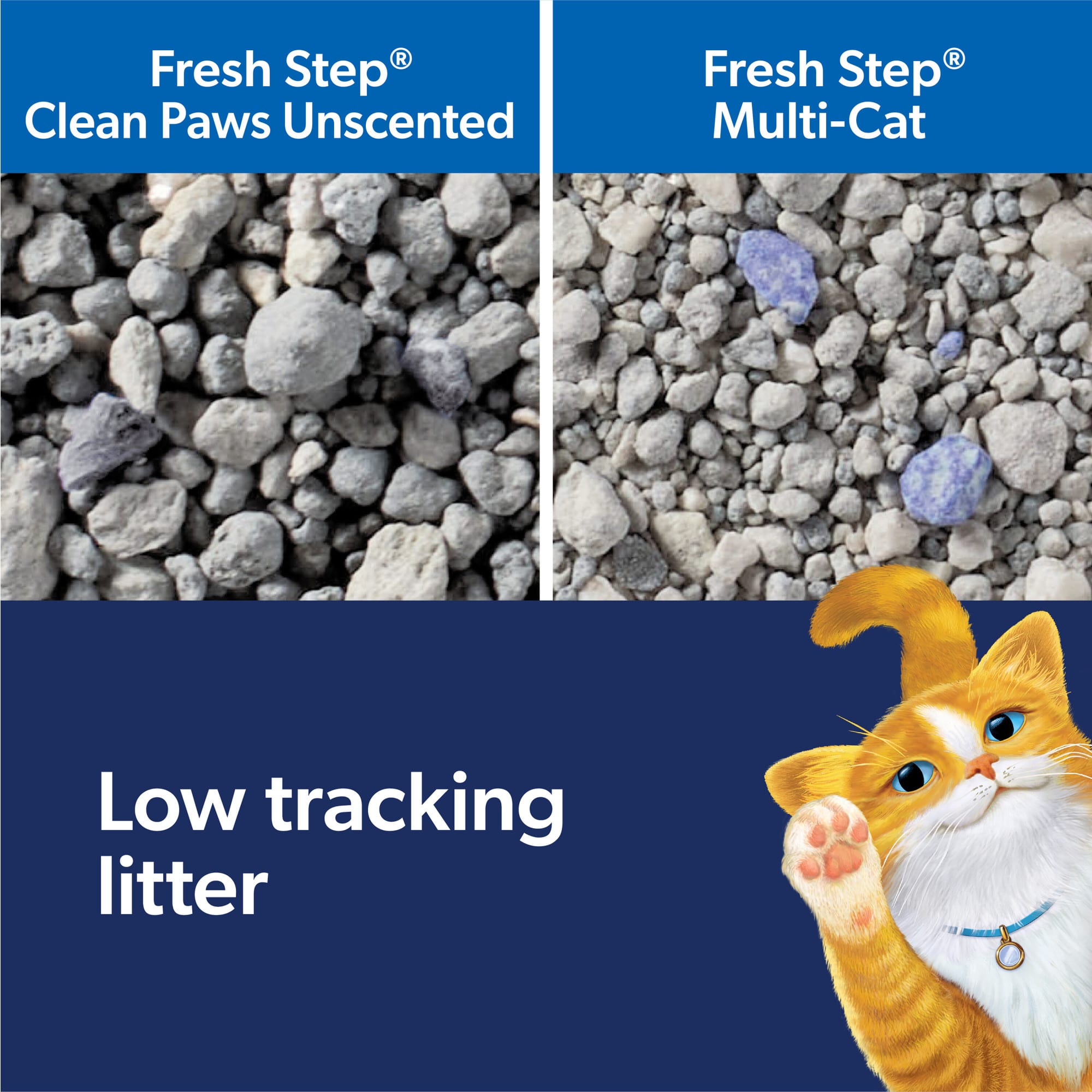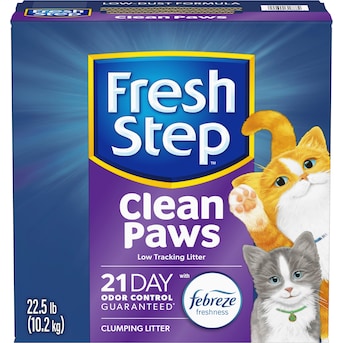Ever noticed your cat leaving a trail of litter throughout your home? If you find yourself constantly sweeping up little granules, you’re not alone.
Cats have a knack for getting litter stuck in their paws, and it can be a real headache. But don’t worry—there are simple ways to keep your floors clean and your cat comfortable. Imagine a home where you no longer have to worry about stepping on stray pieces of litter.
Sounds great, right? In this guide, you’ll discover effective tips to easily remove litter from your cat’s paws and prevent it from happening in the first place. Let’s dive in and put an end to the litter mess for good.
Common Causes Of Litter On Paws
Dealing with cat litter stuck on your cat’s paws can be frustrating. Understanding why litter clings to their feet helps you prevent the mess and keep your home cleaner. Let’s look at the common reasons your cat ends up tracking litter everywhere.
Type Of Litter Used
Some litters are more prone to sticking than others. Clumping litters, especially those made from fine clay or silica gel, can easily cling to your cat’s paws. Dusty or lightweight litters tend to stick more compared to heavier, pellet-style options.
Have you noticed your cat’s paws are cleaner after switching litter brands? Choosing the right litter type can make a big difference in reducing tracking.
Litter Box Design And Size
A small or shallow litter box can cause your cat to kick litter outside. If the sides are too low, the litter scatters more easily onto paws and then onto your floors. Some cats prefer covered boxes, but these can trap litter inside, increasing the chance of it sticking to paws when they exit.
Think about whether your litter box allows enough space for your cat to dig comfortably without scattering litter everywhere.
Cat’s Grooming And Paw Shape
Some cats have fur between their toes that traps litter particles. Long-haired breeds are especially prone to this issue. Also, cats who groom frequently may inadvertently spread litter on their fur and paws.
Does your cat have furry paws or spend a lot of time cleaning themselves? Regular paw checks and grooming can help reduce litter buildup.
Cat’s Behavior And Activity Level
Active cats who dig vigorously or cover their waste thoroughly tend to get more litter stuck on their paws. Sometimes, anxious or playful behavior leads to excessive digging, increasing litter tracking. Older or arthritic cats might drag their paws, picking up more litter unintentionally.
Observe how your cat uses the litter box. Could stress or boredom be causing over-digging?
Cleaning Frequency And Litter Maintenance
Litter that isn’t cleaned regularly becomes clumpy and sticky. This makes it more likely to adhere to paws. Fresh, well-maintained litter is less likely to stick and causes fewer messes outside the box.
How often do you scoop and change the litter? Keeping it clean benefits both your cat’s paws and your home’s hygiene.
Choosing The Right Litter Type
Choosing the right cat litter type plays a big role in keeping your cat’s paws clean. Some litters stick easily, while others fall off quickly. Selecting litter that minimizes clumping on paws makes cleaning simpler for you and more comfortable for your cat.
Each litter type has unique features affecting how much it sticks to fur. Picking the best one can reduce the time spent removing litter from paws and prevent tracking around your home.
Clumping Clay Litter
Clumping clay litter forms tight clumps when wet. This helps scoop waste easily. However, its fine particles may cling to your cat’s paws and fur. Frequent cleaning might be necessary with this type.
Non-clumping Clay Litter
Non-clumping clay litter absorbs moisture without forming clumps. It produces less dust but can be dusty sometimes. This litter is heavier and may stick less to paws than clumping types.
Crystal Litter
Crystal litter is made from silica gel beads. It controls odor well and dries waste quickly. This litter rarely sticks to paws because the beads are larger and less dusty.
Natural And Biodegradable Litters
Natural litters use materials like corn, wheat, or wood. They tend to be lighter and less dusty. These litters often fall off paws easily, reducing mess outside the box.
Factors To Consider When Choosing Litter
- Dust level: Lower dust means less sticking to paws.
- Particle size: Larger particles are less likely to cling.
- Texture: Softer textures can stick less and feel gentle on paws.
- Odor control: Good odor control keeps litter boxes fresh longer.
- Environmental impact: Biodegradable options are eco-friendly.
Quick Cleaning Methods
Cleaning cat litter from your pet’s paws can be quick and easy. Using simple tools helps avoid stress for both you and your cat. These quick cleaning methods remove litter effectively without hurting your cat.
Using A Damp Cloth
Take a soft cloth and dampen it with warm water. Gently wipe each paw to remove stuck litter. Avoid soaking the cloth too much. This method cleans paws without causing discomfort.
Pet-safe Wipes
Choose wipes made especially for pets. They are gentle and safe for your cat’s skin. Wipe the paws carefully to pick up litter particles. These wipes also help keep paws fresh and clean.
Gentle Brushing
Use a soft-bristled brush to clean between the toes. Brush lightly to lift litter out without pulling fur. This method works well for cats with longer fur. Brushing also stimulates circulation and feels nice for your cat.

Credit: www.amazon.com
Preventive Measures To Reduce Litter Sticking
Preventing cat litter from sticking to paws saves time and keeps your home cleaner. Small efforts make a big difference. Focus on simple habits and thoughtful setup to reduce litter tracking. These steps help keep your cat comfortable and your floors tidy.
Regular Paw Checks
Check your cat’s paws often for stuck litter. Use a soft cloth or your fingers to remove particles gently. Clean paws prevent litter from spreading around the house. Make this a daily habit, especially after litter box use.
Litter Box Placement
Place the litter box in a low-traffic, well-lit area. Choose a spot with enough room for your cat to enter and exit easily. Avoid placing the box on carpet or rugs to limit litter spread. A hard floor surface works best to catch loose litter.
Litter Box Mats
Use a litter box mat outside the box. Mats with textured surfaces trap litter from paws effectively. Choose mats that are easy to clean and durable. Position the mat so your cat steps on it when leaving the box.
When To Consult A Vet
Knowing when to seek professional help for your cat’s litter-covered paws can save your pet from discomfort and potential health issues. Sometimes, removing litter at home is enough, but there are moments when a vet’s advice becomes essential. Recognizing these signs early helps you act before a minor problem turns serious.
Signs Of Infection Or Irritation
If your cat’s paws look red, swollen, or have open sores, it’s time to see the vet. These symptoms suggest irritation or infection caused by litter particles scratching or embedding in the skin. You might notice your cat constantly licking or favoring one paw, which could mean pain or discomfort.
Persistent Litter Stuck Despite Cleaning
Sometimes, litter grains get stuck between the pads or claws and won’t come off with gentle cleaning. If you’ve tried washing and brushing but the litter remains, a vet visit can help. They have the tools and experience to safely remove stubborn debris without hurting your cat.
Changes In Your Cat’s Walking Or Behavior
Watch for limping, reluctance to walk, or hiding more than usual after litter exposure. These behavior changes could signal that litter is causing discomfort or even injury. Don’t ignore subtle signs—your cat can’t tell you what hurts, but a vet can find out.
Allergic Reactions To Cat Litter
Some cats develop allergies to certain types of litter, leading to paw swelling or itching. If you notice these signs, especially after switching litter brands, consult your vet. They can recommend hypoallergenic options or treatments to ease your cat’s symptoms.
When Home Remedies Don’t Work
Home cleaning methods work well for most cases, but if your cat’s paws stay dirty or irritated after a few days, professional help is necessary. Delaying vet care might worsen the problem and cause infections. Always prioritize your cat’s comfort and health over saving time.

Credit: www.petco.com

Credit: catit.ca
Frequently Asked Questions
How Can I Quickly Remove Cat Litter From Paws?
Use a damp cloth or pet-safe wipes to gently clean your cat’s paws. Avoid harsh soaps to prevent irritation.
What Tools Help Get Litter Off Cat Paws Effectively?
Soft brushes, damp towels, and pet-safe wipes work best to remove litter from paws without causing discomfort.
Can Regular Grooming Reduce Litter On Cat Paws?
Yes, frequent paw checks and grooming minimize litter buildup. Keep nails trimmed to prevent litter clumping.
Is It Safe To Use Water To Clean Cat Paws?
Yes, use lukewarm water to rinse paws gently. Avoid soaking to prevent stress or coldness.
Conclusion
Keeping cat litter off your cat’s paws is simple with the right steps. Gently wipe their paws after each use. Use a damp cloth or pet-safe wipes for best results. Regular checks help catch litter early. Clean paws mean less mess around your home.
Happy cats and clean floors go hand in hand. Small efforts make a big difference in pet care. Try these tips to keep your cat comfy and tidy.

